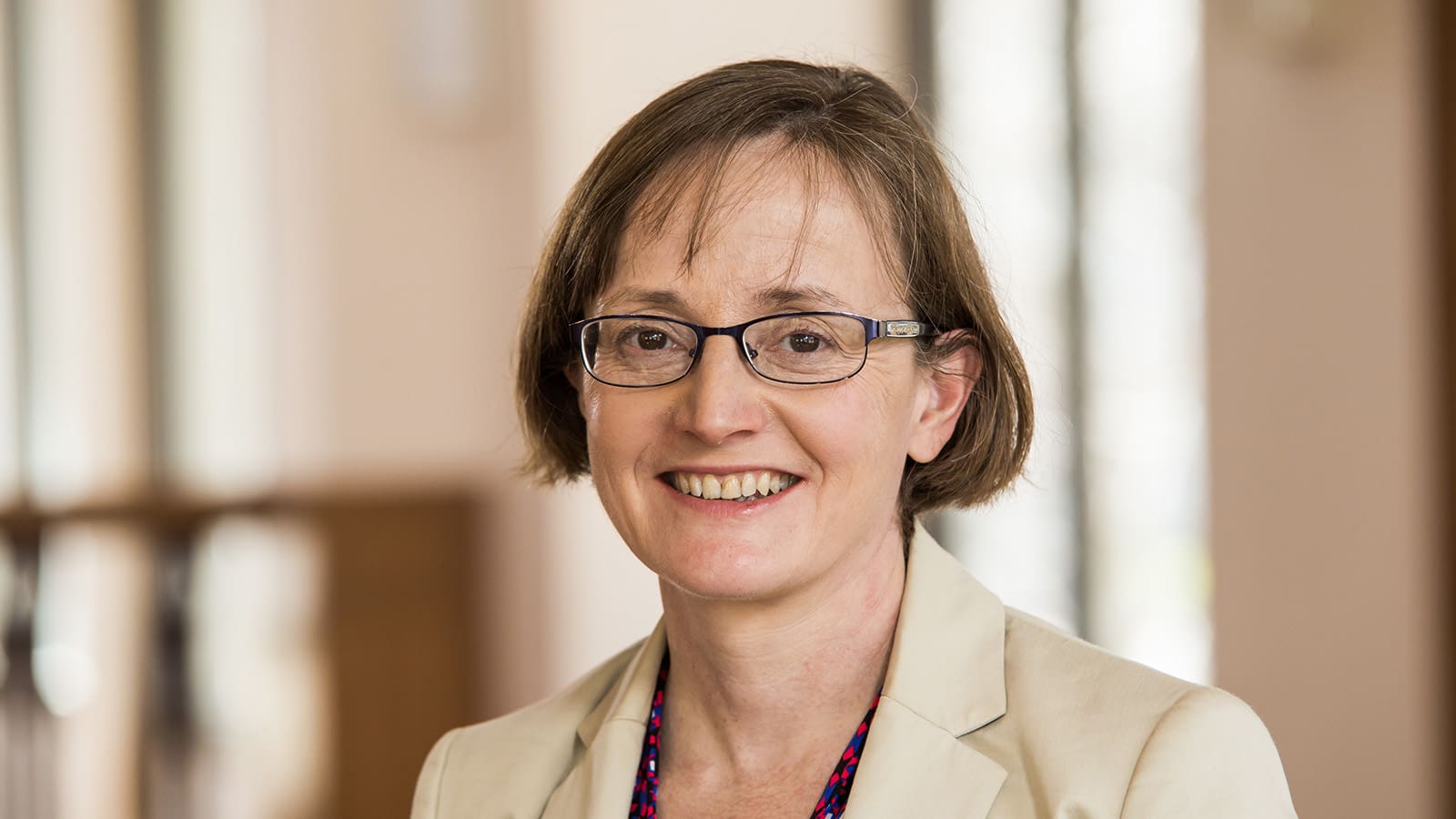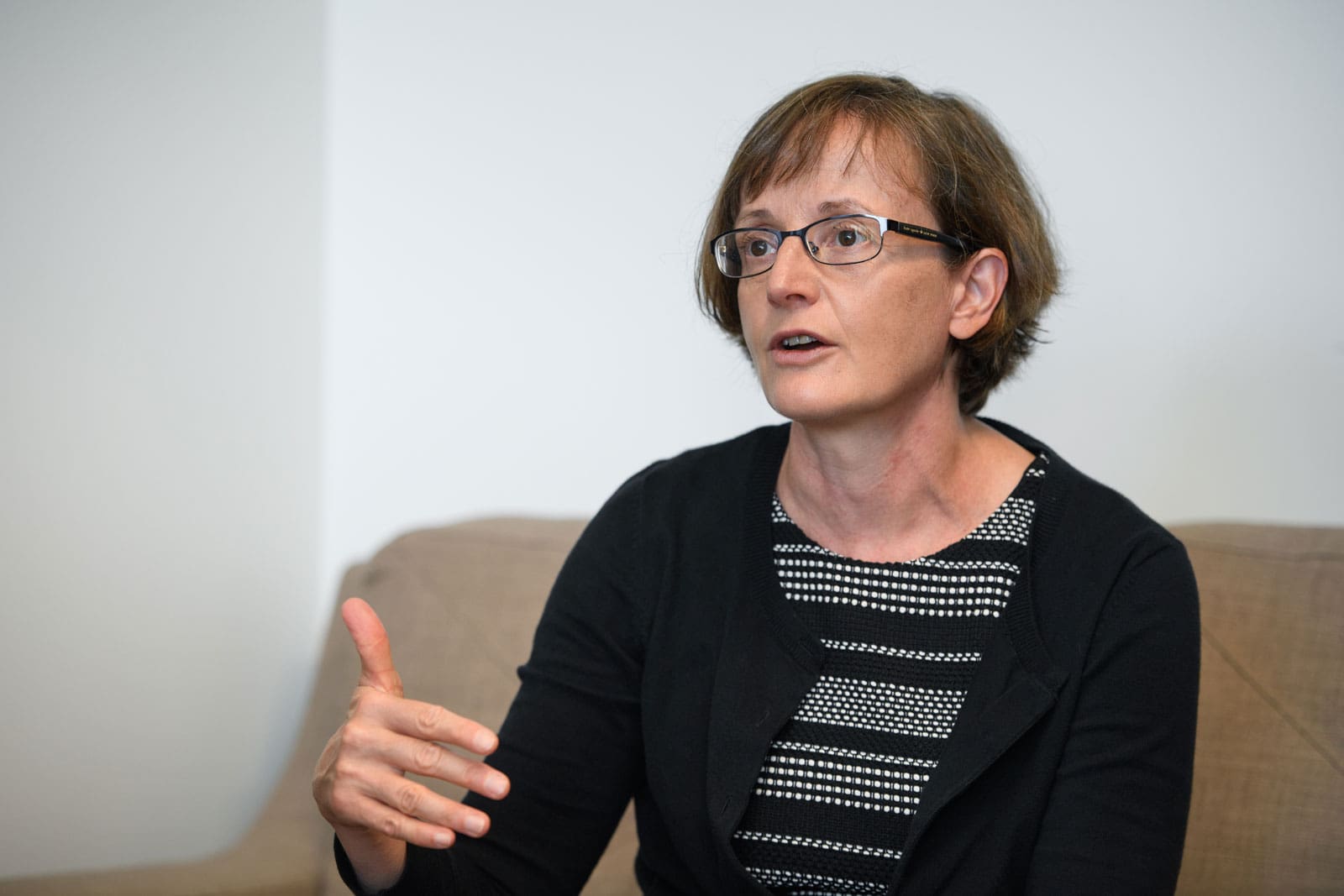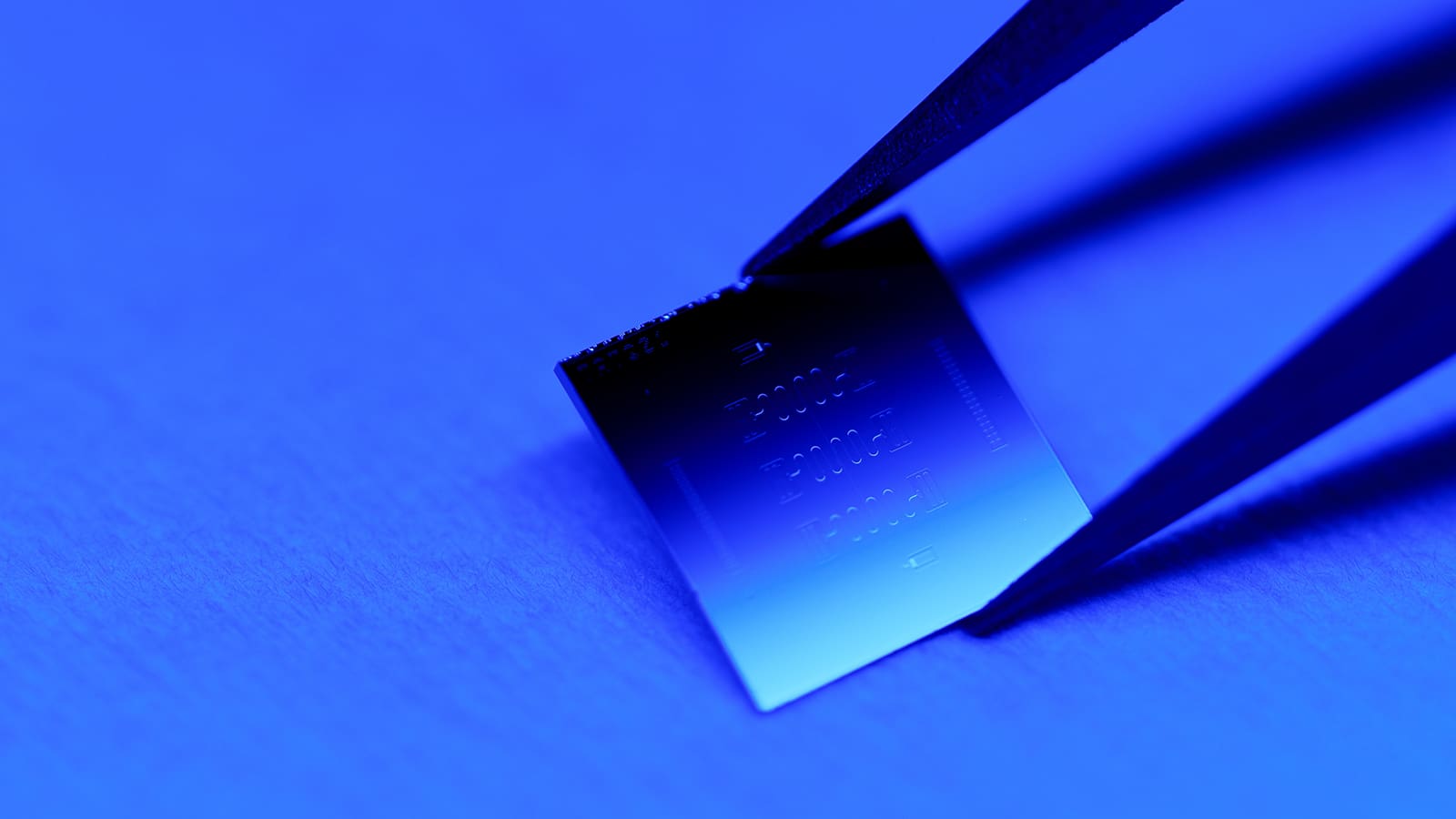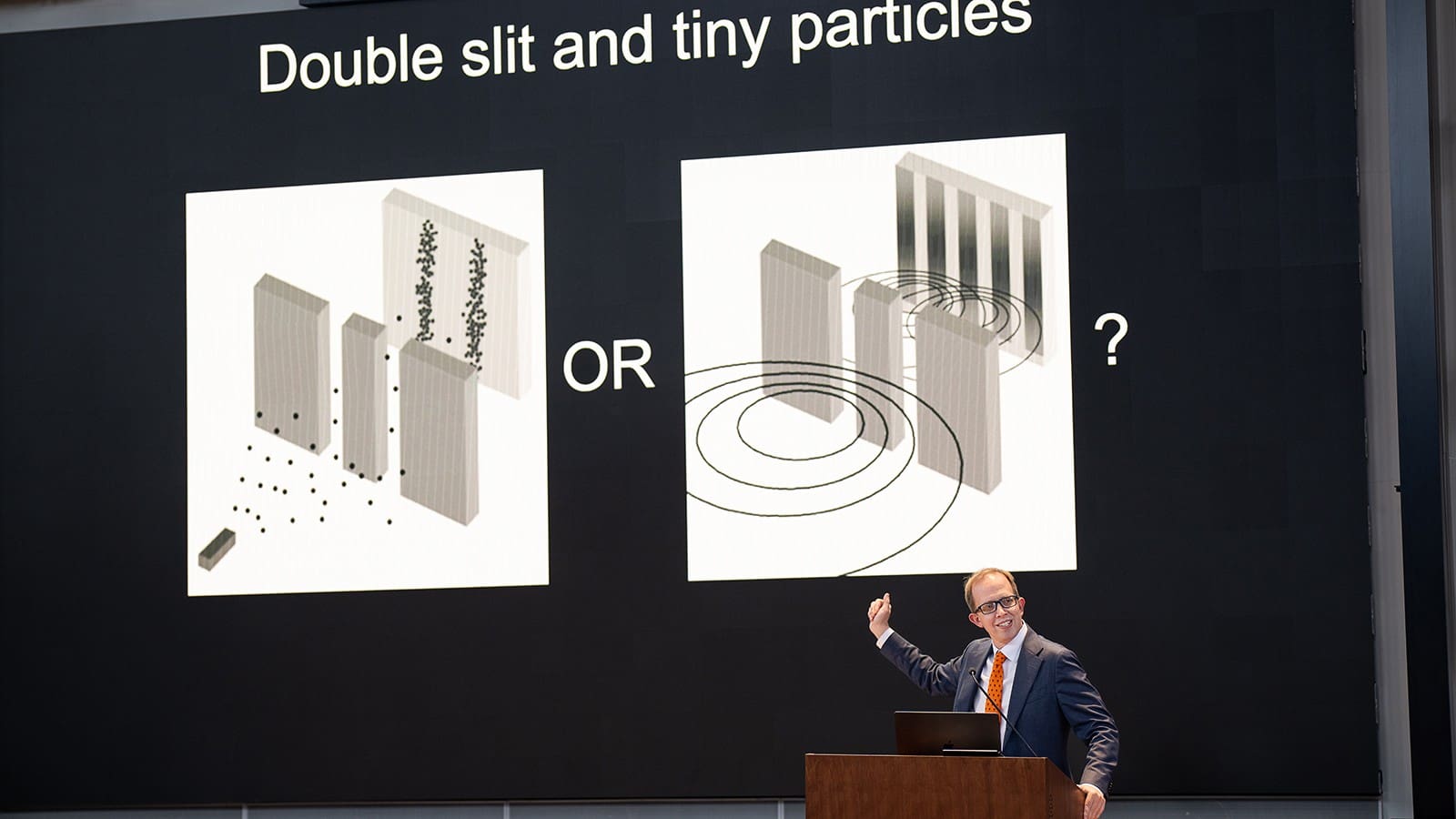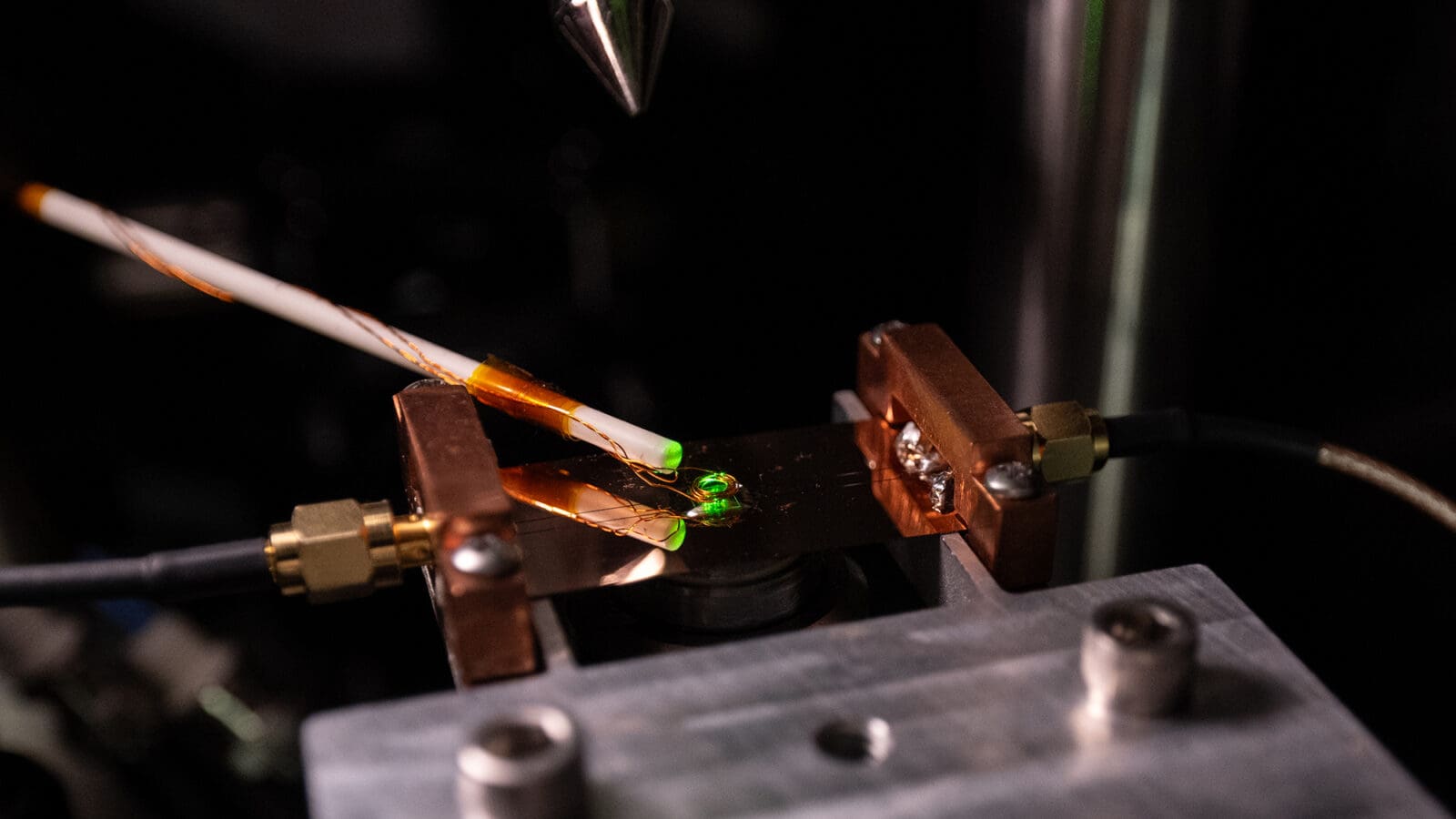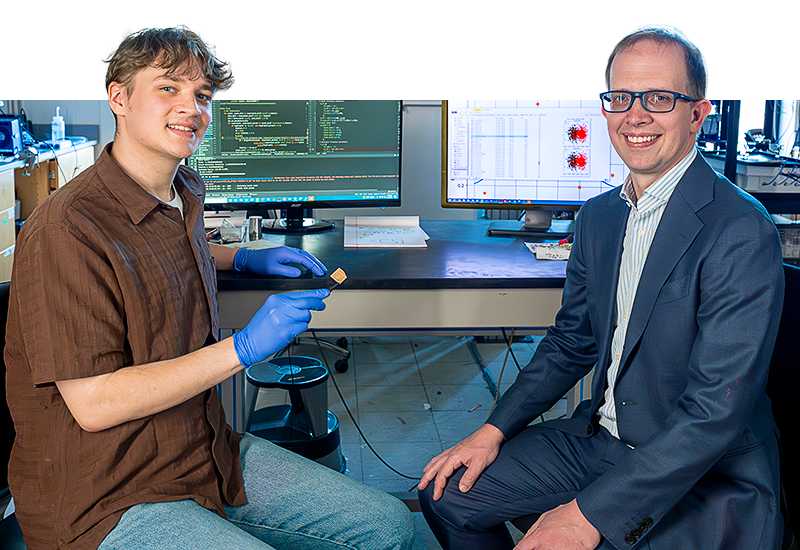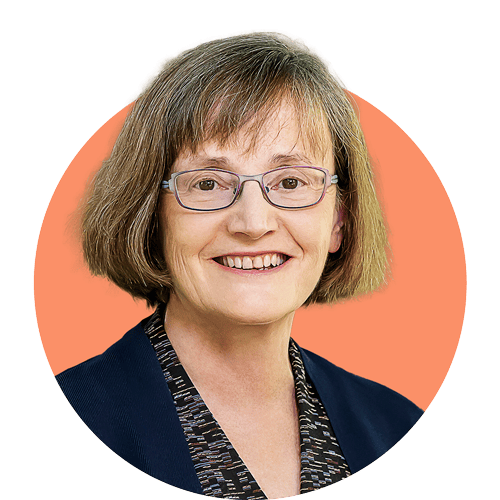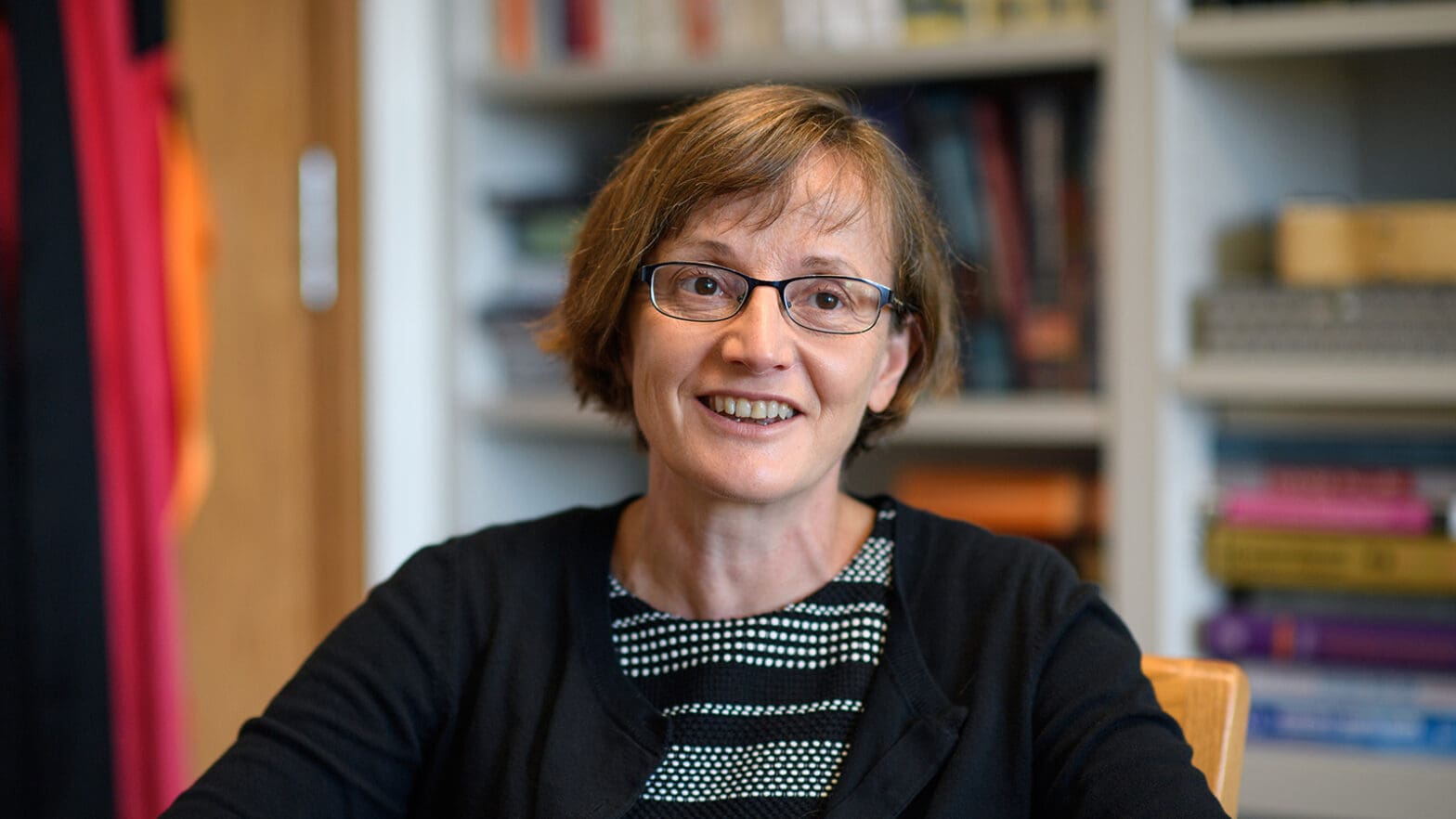
Computer scientists have a key role in shaping quantum systems
By
on
This article is from the Quantum issue of Equad News magazine.
Waiting for coffee to brew in Princeton’s Engineering Quadrangle, Martonosi spoke to her colleague Stephen Lyon, who was developing a quantum bit (or qubit) technology with unique physical and computation characteristics. While the coffee brewed, Lyon and Martonosi, an expert in architecting the hardware organization of computing systems, discussed how best to design a system to take advantage of Lyon’s technology.
“Years later, and many pots of coffee later, I am still doing this,” Martonosi, the Hugh Trumbull Adams ’35 Professor of Computer Science, said in a lecture on the state of quantum computing. “And we are still collaborating.”
When it comes to quantum, Martonosi is a computer scientist working on a type of computer that is still advancing toward at-scale practical usage. It’s a challenging spot, but one where computer scientists can make a big difference in how this powerful new tool takes shape, she said. Martonosi, an expert in computer architecture and power efficiency, recently led Princeton’s contribution to a multi-institutional effort to advance quantum computing across a wide range of areas.
Currently, Martonosi says, quantum computing is similar to classical computing in the 1950s. Computer scientists and mathematicians have designed powerful algorithms to take advantage of quantum’s unique capabilities. Engineers and physicists have created the basic elements of machines and qubit technologies, and the means for them to compute and interact. But there is currently a large “algorithm-to-machine” gap between the resources promising practical algorithms need, and the capabilities of systems that are currently buildable. Martonosi, along with other computer scientists, seeks to bridge that gap in order to accelerate the path to practical, at-scale quantum computing.
The payoff will be different from the computer revolution we have witnessed over the last 50 years. Unlike classical computing, which encompasses nearly every aspect of modern society, quantum computing systems are likely to remain devoted to very specialized tasks, Martonosi said, but those tasks will be important.
“You will not have a quantum laptop,” she said. “Think about it being something like an accelerator in the cloud for particular applications, whether they’re optimization applications, financial analysis, understanding molecular dynamics or chemistry, agriculture, pharmaceuticals. In those kinds of things, it is potentially game-changing.”
In quantum, a major challenge is designing systems that work quickly, accurately, and efficiently enough to take advantage of qubits’ unique features. Superposition, the ability of very small objects to exist in more than one state at the same time, is one feature; entanglement, the phenomenon of linking quantum objects into a network with no visible means of connection, is another. But superposition and entanglement are extremely fragile. Fluctuations in magnetism or electrical charge, or operations of the computer itself, can cause them to dissipate or decohere.
“The very things that make qubits interesting and rich in terms of compute capabilities also make them challenging,” Martonosi said. “Manipulating the state of a qubit is a ‘noisy’ operation and also tends to disrupt other nearby ones.”
Martonosi said computer scientists and engineers must learn how to work with these challenges to develop systems, either by creating methods to better manipulate qubits or building hardware that can account for introduced errors. The encouraging news, she said, is that engineers have been rapidly increasing the length of time that they can maintain coherence in quantum systems. They have also been getting better at implementing the hardware for new machines.
“One thing that skeptics tend to ask is, if these quantum computers barely exist, why don’t we just leave it to the physicists for a little while longer?” Martonosi said. It is a valid question, but it does not take into consideration the critical decisions that computer scientists can influence as the first working systems take shape. Every design involves tradeoffs, such as how many resources are best applied to one task over another. As new quantum systems are built, computer scientists will have to answer fundamental questions about how they will work.
“We will need to decide how we’re going to program quantum computers. What are the operations?” she said. “We need to decide how to optimize them so we can crunch a computation into the very limited resources that we have.”
Note: Margaret Martonosi is currently on leave from Princeton, leading the National Science Foundation’s Directorate for Computer and Information Science and Engineering.
